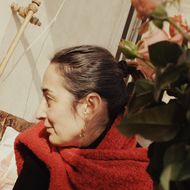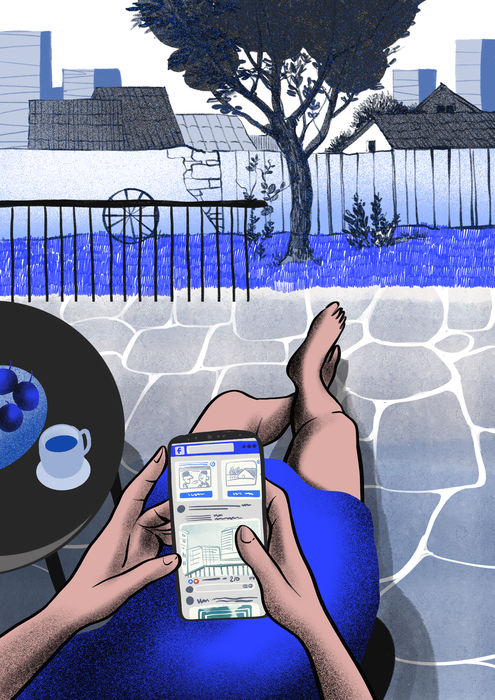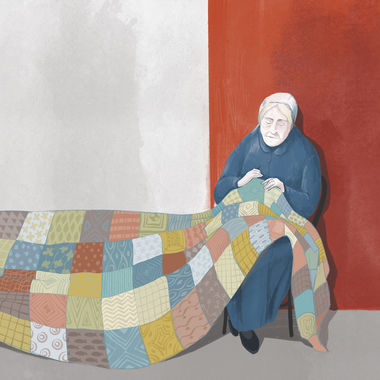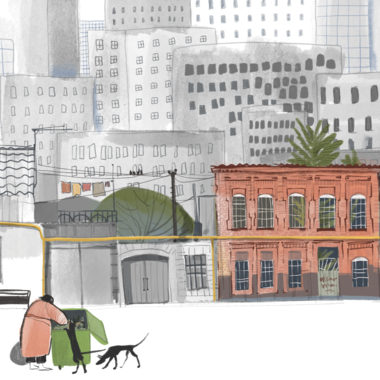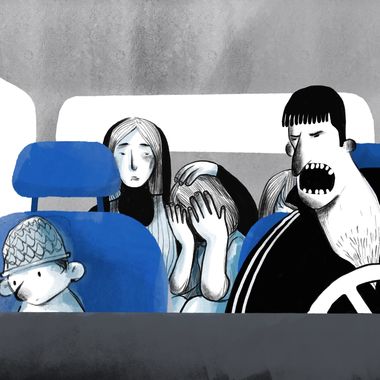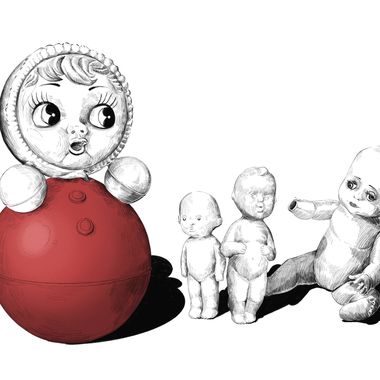*Chomalag means epidemic in one of the dialects of the Gegharkunik region of Armenia.
#Frame
You clean the black table in your garden. The wind from the mountains at night brings dust and dirt. It is July. The summer is halfway over. The evening wind of scorched Yerevan does not allow for a peaceful evening to be enjoyable. You could have been at the shores of the Mediterranean or the Aegean. To flow with the day. To darken with the sea. But coronavirus that set out from China, took over the world house-by-house locking everyone inside. And now in the morning you diligently clean the black table in your garden and betray the seascapes with a still life of the day - coffee, flowers, maybe some fruits or pastry. You do it conceivably for yourself. You add colors and tastes. Extend bridges from house to house.
You construct conversations not to go mad from homekeeping.[1] First a slave to Netflix, then a prisoner of Facebook. The world directly enters your house and then your house plunges into the world. The Facebook newsfeed slips in without knocking on the door. With the pretense of hominess, you pin the colors of your morning still life to the wall of your Facebook page and start receiving guests bidding something akin to a good morning. Every day, between 8-9 a.m. It is an important precondition that the table and the wall is yours, the flowers or fruit be from your garden, the guests either sent from God or Facebook. They come and go, take a seat and stay, drop in and out, get pulled into conversations under your still life. With your still life. And just like that we start the day communally, publicizing the most private, the most personal, the most sacred - the home. And the public home is now something else. Trimmed. Transformed. Trans-homed. With the ambition and aspiration of erasing borders. Inside the fence. Unfenced. Dead. Restrained. Framed. Like the still life.
#wanderer_stuck_at_home
You are not alone. There are many like you. You feel like you have been to people’s homes a thousand times even though you don’t even know where they live. Their homes are now in you. You can physically feel how the large, heavy oak table in your friend's living room in Toronto plunges into you - crushes your feet and goes for the gut. Your hands are now the feet of that table. The wicker chairs on your friend's balcony with the sea view, the one who lives in Marseille, hug you and wrap themselves around you like a sedative. The basket of newly picked mushrooms on the kitchen table of your friend’s summer house near Moscow swings over your head like a pendulum, and the white and gray of your relative's house in Berlin help overcome the heat of Yerevan. Thanks to coronavirus, your issue of belonging was also resolved. You are a member of the family. Framed. You belong to your home. And inside you, the entire world. Inserted in you. Painful at first, it then goes away. Bygone. Transient. Passing. It has entered and left your home. Through you. With you from morning till night - from the bedroom to the kitchen, from the kitchen to the bathroom, to the cellar. The world turned out to be a swinger. The world inside you. You in that world. Like your home. The spinster world. You sleep and wake up carrying it. Yet you lock the door tightly before bed, turning the key three times.
#bygone_lingering
And instead of thinking of the world, you think about home. No problem, you have spent a lifetime thinking of the world. Now the world is a member of your family. It sits and stands with you. Go figure. Your house is the world. No, just a second, your world is your house. Bygone homes, homes that you have been in and out of are coming to you in fragments. Here, your grandma’s neighbor Rosa’s house had that kukhni (kitchen).[2] Zal (hall), spalni (bedroom),[3] khol (living room), the toilet with the vana (bathtub). There was no matching her happiness when she got that ugalok (corner couch) for her kukhni. That German made stsenka (cupboard) which she had to wait years for and save money for. The Czech made lustras (chandeliers) that always sparkled. The kitchen umivalnik (sink) which she cleaned with Zhemchuk [4] a couple of times a day and the spalni furniture was Ludovicos. The zanaveskas (curtains) and pakrivals (furniture covers) that matched the aboy (wallpaper) in each room were washed weekly. There was kilongor (plastic table cover) on the kukhni table, and the soft khol (living room furniture) in the zal was covered in tselafan (cellophane) so that it would not get dirty. The khaladzilnik (refrigerator) was polni (fully) filled. Crystal vas-maz (vase), bakals (cups) were diligently shined and lined up back in the servand (vitrine) weekly. And the old gadzirop and shkaf (wardrobe and shelves) from the spalni (bedroom) were moved to the closed-off veranda. There was an old dzivan (couch), a kravat (bed) with iron brprruzhins (springs), a kushetka (settee) and an old shifanerrka (hutch). The pol (floor) was khali parket (carpet parquet) and it was treated with mastiga (mastic) once a week and then polished with palatyorr (buffing machine). And despite there not being any spiders or spider webs in the building they lived in, the patalok (ceiling) needed to be cleaned of webs to make sure no eye would catch such a disgraceful sight. The padakonniks (window sills) were always clean, on them, house plants in garshoks (pots) were lined up. They also had a kladovka (pantry) on the first floor of the padzezd (entrance/landing), it was full of vareni (confiture) and kampot (compote) bankas (jars). Her Armenian house, her Hayasdanyan, Soviet house was in Russian. She could barely speak Russian but her house was in Russian. And the houses of many were in Russian. For a nation that has turned a sedentary lifestyle into a core ideology. For a nation that has an authentic architectural tradition, kvarrtsira (apartment) was in Russian.
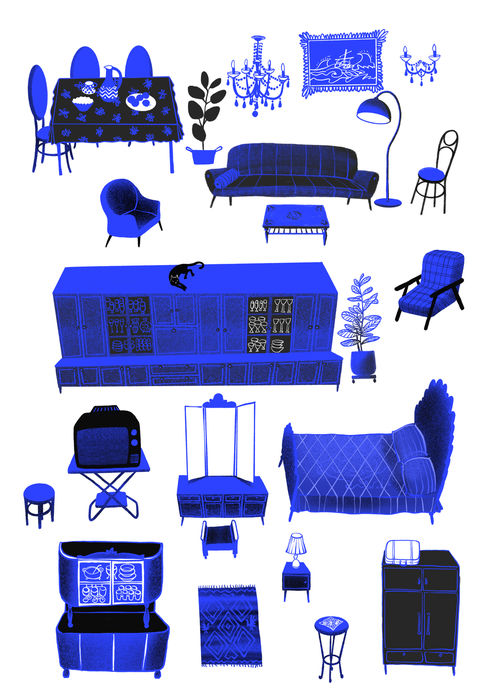

#bygone-existing
But why did I remember this? Oh. You couldn’t just stay put at home. There is an archangel living in that “godly” city, many occasionally peep/peer into his kitchen. He goes from house to house, in and out, climbs up the Armenian speaking walls of Facebook, nests with some facebookers and becomes a part of this communal home of ours, like a piece of furniture. He has taken the very homely and to some extent ritualistic space of the Soviet dissident - the kitchen - twisted it, turned it upside down and is now going Live there. The Soviet kitchen was very small. Astonishing to think that across the infinite Union that many people could come together around such a table mainly sitting on taburetkas (stools). They would be buried in cigarette smoke, turning night into day with forbidden books and thoughts. At the beginning of the Union, constructivist architects would design buildings without kitchens. It was all communal and there was a shared canteen on the first floor where the residents would go to eat. Then, probably the individual’s desire to have personal space won. And they started to also design and include small kitchens, the size of which, according to the state, would be a square meter per person. There are several constructionist buildings in Yerevan as well, whose apartments initially did not have kitchens. One, for example, is on the corner of Zakyan and Khorenatsi. Now, that one has started to go on air from that kitchen. An ethereal/aerial/air-ial being. But wasn’t it initially the other one, the leader, who was talking about the benefits of nettle against the coronavirus from his kitchen? Two air-ial beings. And people stuck at home became air-sick. The constructivists designed Facebook, our komunalka.
#hearth
But I wasn’t intending to write about this at all. What was I going to write about? The summer. Strange. Homely. About this homeless summer when the world is a hearth to coronavirus. All of us women and men of the hearth. “Armenia is my hearth” so says the campaign.[6] It is written by hand. Armenia is a hearth to the epidemic. They write so. The epidemic has lodged and nested in us. It is the wanderer who stayed home. And you are going on about the kukhnya.
Coronavirus is now one of humanity’s identities. One of those universal identities that knows no boundaries and has a hearth everywhere. You are told to go out to the street, then they tell you to stay home.[5] You have survived multiple lives on the street and at home. You want to think of the street. You end up thinking about home. You break tradition. You ring in the New Year in Republic Square. The most important sessions are behind closed doors. But this year, you ring in the New Year in the Square. But you are in the Square. And even the mask you wear will not conceal your nakedness. Your defenselessness. From the hearth. In the hearth. With the hearth.
--------------
[1] I have borrowed this from Armen Hayastantsi’s work, part of the same series.
[2] Кухня [kukhnya] kitchen in Russian; kukhni is a common way many Armenians pronounce the word Кухня
[3] спальня [spalniya] bedroom in Russian; spalni is a common way many Armenians pronounce the word Spalniya
[4] Zemchuk, which means pearl, was the name of a popular household cleaning product in the Soviet Union.
[5] “Go out to the street” was one of the main slogans of the 2018 Velvet Revolution, while the call during the COVID-19 pandemic was to “stay home.”
[6] "Armenia is my hearth, the people my family" was one of the slogans of the transformation strategy for 2020-2050 launched by the Armenian government. There were handwritten posters of the slogan placed throughout the country.
In cooperation with the Heinrich Boell Foundation Yerevan Office South Caucasus Region.
also read
The Quilted Refuge
By Vigen Galstyan
A story weaving together the fragments of a woman’s life who organized the chaos of reality into a sensible and livable realm offhandedly called “home” but no one recognized it until she was gone.
Homekeeping
By Armen of Armenia (Ohanyan)
"Not a True Story But a Real Story" series is a reflection on individual transformations of collective identity and the concept of home. Armen of Armenia (Ohanyan) ponders why “housecat-like Armenians” didn’t just sit tight within their four walls when they could have become “heroes” by simply staying home.
Zarmanazan
By Gevorg Ter-Gabrielyan
This is neither a true story nor a real story. But it could be either if fate ever stepped in to deliver a surprising lesson on toxic masculinity.
The Peephole
By Karen Avetisyan
A peephole view into the kaleidoscopic distortions of other people’s lives where human interaction is set in ways foreign to you and distant from you yet in your city where the “hero” is your friend. A true, but not a real story from the ninth floor, in building 9a, in the Ninth District, the door without the peephole.

